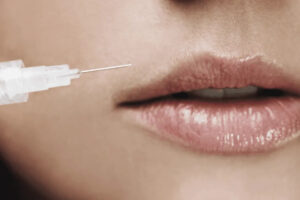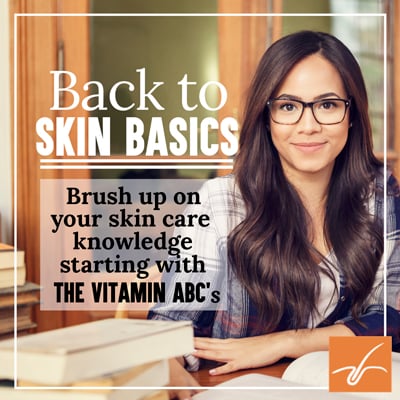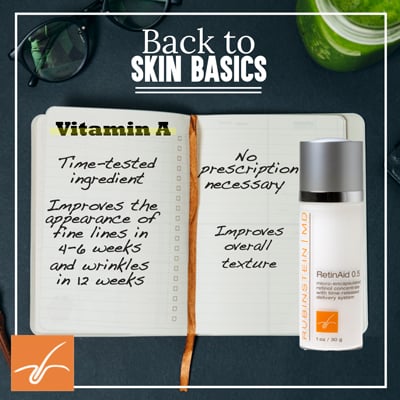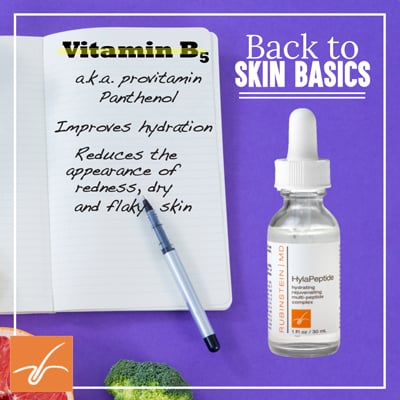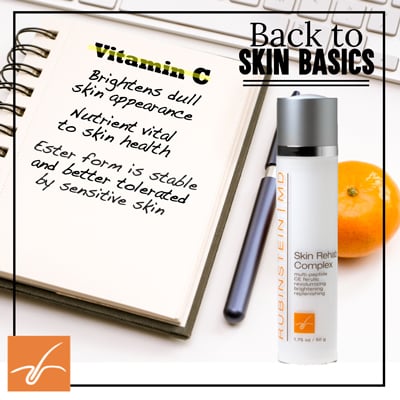Best Treatments for Dark Under-Eye Circles

By Alicia Doyle Reporter, Highya June 13, 2017
Developing dark circles under the eyes is not necessarily age related. In fact, there are multiple reasons why people develop dark circles, including genetics, lack of sleep, chronic rubbing and exposure to UV rays.
But thanks to advancements in modern science and technology, there are a number of clinical methods and products that can diminish these dark circles, including filler injections, eye creams, laser treatments and radiofrequency, as well as surgery that involves the removal of fat from the lower eyelid.
This article explores the best clinical treatments and creams for dark under-eye circles that experts recommend. We also discuss the causes of dark circles, as well as preventive measures that can help diminish this look.
We’ve gathered input from a number of professionals, including a board certified dermatologist who is also a laser specialist, an assistant professor of clinical dermatology at a world-renowned academic medical center, and two Medical Doctors with plastic surgery practices in Southern California.
Let’s begin by introducing Dr. Yuly Gorodisky, owner of the West Coast Plastic Surgery Center in Southern California who is board-certified by the American Osteopathic Board of Surgery. According to Dr. Gorodisky, some people develop dark circles under their eyes before they hit their teenage years, while others develop dark circles as they get older.
What Causes the Appearance of Dark Circles Under the Eyes?
Genetics
Genetics play a large part when dark under-eye circles develop in the young, Dr. Gorodisky noted. Most patients who are concerned about these circles in their twenties usually have family members who have them as well.
According to the Mayo Clinic, heredity is one of the most common causes of under eye circles. Additional causes include allergies, eczema, physical and emotional stress, smoking, sun exposure and alcohol consumption.
Gravity & Migration of the Eye’s Fat Pad
In older patients, gravity and aging typically causes dark circles.
There are two main components: skin discoloration and shadows, Dr. Gorodisky explained.
“The skin discoloration is caused by thin skin under the eyes and the blood vessels that are present under the skin,” Dr. Gorodisky said.
The shadows occur because of hollowing of the space under the lower lid due to the migration of the fat pad due to gravity.
As the fat pad migrates lower, the space between the cheek and the lid becomes larger and thinner, Dr. Gorodisky said. This creates a hollow trough, also called a “tear trough,” which makes the person look older and more tired. As the light falls from the top, a shadow is created into the tear trough and makes the area appear dark.
“This is especially noticeable in patients whose lower lids are swollen due to allergies or lack of rest,” Dr. Gorodisky said.
Chronic Rubbing Due to Allergies
Dr. Temitayo Ogunleye, assistant professor of clinical dermatology at Penn Medicine, agrees that allergies can play a big role when it comes to dark circles developing under the eyes.
People with seasonal allergies will typically rub their eyes, which can cause dark under eye circles, she said.
Chronic rubbing – or chronic friction to any part of the body – can cause darkening, Dr. Ogunleye explained.
“That’s why people have dark elbows and dark knees from rubbing,” she said. “It’s the same way for seasonal allergies – if you’re rubbing your eyes you can get darkening of that skin.”
The Tyndall Effect
Through a phenomenon called the Tyndall effect, the overlying under eye skin looks dark because of how the light is refracted when it hits the vessels deep to the skin, according to Dr. Mark D. Gaon, a board certified plastic surgeon at Finesse Plastic Surgery in Newport Beach, California.
“That’s why it is often hard to treat with lightening creams and most chemical peels,” Dr. Gaon said.
Some of the newer lasers and devices – CO2, ultrasound therapy or radio frequency – help tighten the skin and lessen the Tyndall effect, thus making the dark circle less apparent, he noted.
In cases where there is actually darkened skin under the eyes, lightening creams or lasers that decrease pigment can also be helpful.
“If there are superficial blood vessels that contribute to the discoloration, this is treated with a laser that targets the vasculature,” Dr. Gaon explained. “If the appearance of darkness is from hollowing along the lower orbital rim, this is best corrected using a dermal filler, or with surgery.”
Now that we’ve explored some of the causes of dark under eye circles, let’s discuss the best remedies for dark under eye circles, which may involve a combination of treatments that include topical creams, fillers, as well as laser and radiofrequency treatments.
Best Clinical Treatments for Dark Under-Eye Circles
Injections of Filler
While Dr. Gorodisky is unaware of any topical prescription medications, he said dark circles may be improved with injections of filler.
Fillers can last between 3 to 6 months – and as long as 18 to 24 months depending on the type of filler. The cost ranges from approximately $450 to $800 per syringe or vial of filler.
“The filler can improve the hollow space between the eyelid and the cheek that improves the appearance of the shadows that cause the dark circles,” Dr. Gorodisky explained. “New treatment options also involve using the patient’s own fat.”
Aging or weight loss can cause a hollow pocket in the skin, which creates a shadow and an appearance of an under eye bag, said Dr. Gene Rubinstein, a board certified dermatologist and laser specialist at the Dermatology and Laser Centre of Studio City in Southern California.
“We inject a small amount of Restylane, Volure or Belotero to fill in the hollowness and create a smoother transition from the cheek to the lower eyelid,” Dr. Gene Rubinstein said.
Additionally, when patients come in with severe discoloration, “we always review their medical history and medications,” Dr. Rubinstein noted. “Some conditions, such as some thyroid disorders, result in under eye bags.”
Erbium or CO2 Laser
In Dr. Gorodisky’s practice, Erbium or CO2 laser treatments are used to tighten the skin.
“This may also improve the dark circles by stimulating collagen and making the skin tougher and less thin,” he said.
Laser resurfacing is a procedure that uses a laser to improve the appearance of skin, or treat minor facial flaws by removing layers of skin, according to the American Society for Dermatologic Surgery.
The society noted that two most common types of resurfacing lasers are:
Carbon Dioxide (CO2): This type of laser is used to treat wrinkles, scars, warts and other conditions.
Erbium: This type of laser is used to remove superficial and moderately deep lines and wrinkles on the face, hands, neck and chest. It causes fewer side effects than CO2 lasers.
Dr. Gorodisky said that the downtime may range from a day or two to a week, depending on how aggressive the treatment is. The cost can range from $200 to $600 per treatment, and the side effects may include redness and a small risk of scarring.
The Food and Drug Administration recommends that people considering a laser procedure should consult a dermatologist or the manufacturer to determine whether or not they would be good candidates.
“Be sure to ask your dermatologist for a copy of the patient labeling for the specific laser device used to understand the risks,” the FDA advised.
Additional potential risks may include allergic reactions to anesthesia, burns or blisters, or abnormal pigmentation or infection.
Laser Treatments
Laser treatments such as PicoSure, fractionated resurfacing or RevLite lasers address pigmentation, according to Dr. Rubinstein.
But caution should be practiced when choosing a provider who has experience with the delicate skin around the eyes and practices very strict laser safety precautions, especially around the eyes, Dr. Rubinstein emphasized.
“Over-treating this skin may lead to more pigmentation resulting from inflammation,” Dr. Rubinstein added. “Lasers should be used primarily for skin tightening and increasing collagen elasticity in this area.”
Fractionated Resurfacing Laser
According to the Laser and Skin Care Center located in Southern California, the fractionated resurfacing laser delivers a series of microscopic, closely spaced laser spots to the skin, while simultaneously preserving normal healthy skin between the laser spots.
Fine lines around the eyes can noticeably fade for those who undergo this treatment, as well as uneven coloring and brown spots caused by aging and sun exposure.
The best results are generally achieved by people who undergo a series of three to five treatment sessions, spaced one to two weeks apart. While results are claimed to be long-lasting, additional treatments will most likely be needed.
Based on national averages, the typical minimum cost is around $1,000, and the maximum cost is $1,700 – with the national average cost estimated at $1,350. However, the pricing can vary depending on the medical doctor administrating this treatment, so make sure you are aware of all the fees involved.
PicoSure
PicoSure is an FDA-approved aesthetic laser that delivers energy super fast – in trillionths of a second. As a result, particles that make up pigment vibrate and shatter, according to the manufacturer’s website. Utilizing this highly targeted energy, PicoSure® “disrupts” the particles responsible for a range of pigment conditions, such as sunspots and other discoloration.
“Pulses from the PicoSure® laser can actually lead to new collagen and elastic production when focused through special lens arrays,” Dr. Robert Weiss of the Maryland Laser Skin & Vein Institute stated in a press release issued by Cynosure®, the company that developed PicoSure®.
“An additional benefit is that pigmentation of the skin is also greatly improved which typically is not achieved by injectables such as toxins or dermal fillers alone,” Dr. Weiss noted.
At the Phoenix Skin Medical Surgical Group, a series of three treatments, three to four weeks apart, is recommended to achieve optimal results. For the entire face, the cost is $350 per treatment, and $900 for a package of three.
While individual results may vary, the skin might be red and tender for about two days. Results typically begin to develop within six weeks, and full results can be seen up to six months post-treatment. Maintenance treatments are recommended every six months for best and continued results.
Chemical Peels
Chemical peels that are specially designed to address pigmentation may also be a great solution, Dr. Rubinstein said.
“A peel called Vi Peel® is my most effective go-to treatment because it is one of the only de-pigmentation treatments that can be used directly on the upper and lower eyelids,” said Dr. Rubinstein, further noting that details about this peel can be found at http://viaesthetics.com/vi-peel/
One of these kits, VI Peel with Precision Plus, is designed for sun spots and pigmented skin. This kit is claimed to reduce the appearance of age spots, brighten stubborn areas of discoloration, and smooth away rough skin texture.
Vi Peel® products are typically administered by a licensed medical professional, and the procedure is considered “simple” and “pain-free,” according to the manufacturer’s website.
VI Peel® products, which come in different kits, can also be purchased online. On Amazon.com, for instance, these kits range from $173 to $225.
Radiofrequency Treatments
Radiofrequency treatments may also be used such as Pellevé, Forma or Thermi, Dr. Gorodisky advised.
Pellevé heats the deep layers of the skin using advanced radiofrequency energy. The heat causes the existing collagen to contract and tighten, and after the treatment, the skin starts to produce new collagen.
Forma also uses radiofrequency technology to stimulate the formation of new collagen, as well as improve the skin’s elasticity.
Thermi – described as “controlled non-invasive tissue heating” – helps tighten the loose skin under the eyes, which can help diminish the appearance of dark under eye circles.
These treatments are painless and have no downtime, but usually require a series of 6 to 10 to be effective, Dr. Gorodisky said. The cost is $200 to $400 per treatment.
Lower Lid Fat Removal
Lower lid eye fat – also known as under eye bags – can potentially make the appearance of dark circles more prominent.
Some patients who have more advanced aging with droopy cheeks and heavy lower lid fat pockets may consider a surgical treatment, Dr. Gorodisky said. That includes lower lid fat removal, and/or fat repositioning with skin tightening and/or fat grafting.
Dr. Gaon said the most common definitive way to correct under eye bags due to age related changes is with this lower lid surgery, also known as a lower blepharoplasty.
“This procedure treats not only the relative excess of fat within the eye bags, but also removes excess loose skin beneath the eyelids,” Dr. Gaon explained.
As we age, the cheek fat falls due to gravity and reveals the thin skin at the level of the bone of the lower part of the eye socket, Dr. Gaon noted.
“This change coupled with the increase in the fatty deposits within the eye socket itself and a loosening of the tissue membrane that holds the eye-socket fat in place, leads to the double-whammy of the large puffy lower lids,” Dr. Gaon said. “This extreme example of under eye bags is really only reliably treated with surgery.”
According to 2016 statistics from the American Society of Plastic Surgeons, the average cost is around $3,000.
This fee does not include anesthesia, which can range from $400 to $800, or the cost of operating room facilities, which can cost up to $1,000. Other related expenses might be involved, so it’s important to consult with a medical doctor first.
Those who want to undergo this procedure should also be mindful of the potential risks, which have been provided by the American Society of Plastic Surgeons:
Anesthesia risks
- Swelling and bruising
- Bleeding from the incision lines
- Dryness to the eyes
- Sensitivity to sun or other bright light
- Difficulty closing your eyes
- Ectropion, an outward rolling of the lower eyelid
- Infection
- Lid lag, a pulling down of the lower eyelid, may occur and is often temporary
- Temporary or even permanent change in vision, and very rare chance of blindness
- Changes in skin sensation or numbness of the eyelashes
- Pain, which may persist
- Possible need for revision surgery
- Unfavorable scarring
Best Creams for Dark Under-Eye Circles
Hydrafirm Eye Brighteneing Repair Creme
As far as the best creams on the market are concerned, Dr. Gorodisky recommends Hydrafirm Eye Brighteneing Repair Crème. This product was created by Zo Skin Health Inc., and costs $140 for 0.5 ounces on the manufacturer’s website.
Dr. Gaon also suggests using ZO Hydrafirm Eye Brighteneing Repair Crème. This product contains Kojic dipalmitate, which targets pigment production to help lighten dark circles.
It also contains saccharomyces lysate extract, carnitine, coenzyme A and caffeine, which promotes microcirculation to reduce puffiness. Additional ingredients include Shea Butter, squalane, olive fruit extract, and Arnica Montana flower extract, which is an antioxidant and anti-irritant.
Dr. Gorodisky noted that most creams only work when they are used, and they do not correct the problem permanently.
Teamine Cream
If the under eye circles are caused by genetic hyper-pigmentation to the area, then either hydroquinone or non-hydroquinone bleaching creams may help, Dr. Gaon said.
He recommends Teamine cream, which contains natural botanical extracts such as jojoba oil, aloe vera gel, grape seed, CoQ10, soy peptides and evening primrose – plus vitamins E and K, which are very beneficial in healing bruised skin.
Teamine cream is sold online through numerous sites, including Amazon and eBay. The prices vary. For instance, a 0.5 ounce jar of Revision Teamine Eye Complex costs $57 on Amazon; whereas the same product sells for around $70 on eBay.
Neocutis Lumiere and Micro-Eyes
Keeping the skin well hydrated and healthy with products containing antioxidants, growth factors and elements specifically designed for the eyes is best, Dr. Rubinstein noted.
“Lumiere and Micro-Eyes by Neocutis have been some of my favorites through the years,” Dr. Rubinstein said.
To find Neocutis skincare providers near you, visit www.neocutis.com/neofinder.
These products can also be purchased online at sites like Amazon.com, where a 15mL bottle of Neocutis Micro Eyes Rejuvenating Cream costs around $65, and a 0.5 ounce bottle of Lumiere costs around $45.
Dr. Rubinstein recommends testing the product on your neck under the jaw line for several days before applying it under the eyes. Then apply once every three days, increasing slowly as your skin gets used to any new preparation.
Apply eye creams in the morning versus before bed to help prevent the increased collection of fluids overnight – this is particularly important if you are prone to allergies or are a face sleeper, Dr. Rubinstein advised.
Before we wrap up this guide, let’s discuss some preventive measures, according to our experts.
Preventive Measures to Help Diminish Dark Under-Eye Circles
Dr. Ogunleye emphasized that dark circles under the eyes “is not the easiest thing to prevent.” However, one practice she highly recommends is getting plenty of sleep to help offset the possibility.
“Everybody requires a different amount of sleep; for some it’s five hours, but others it’s eight to nine hours,” she said. “You should be getting enough sleep so you don’t feel tired during the day. That’s one of those things that’s much easier said than done in our current society.”
Dr. Rubinestein, Dr. Gorodisky and Dr. Ogunleyboth recommend the following preventive measures to help keep the skin around the eyes healthy:
- Wear SPF on all exposed areas of the body
- Get plenty of rest
- Stay hydrated by drinking plenty of water
- Use hyaluronic acid skin care products
- Avoid smoking
- Cover up! Avoid excess sun exposure
- Avoid chronic eye rubbing
- Use good quality skin care products with active ingredients
For people who are unhappy with the appearance of dark under eye circles, it’s important to seek medical attention from a qualified board-certified physician who can guide you toward the best treatment, according to the degree of the under eye malady you are experiencing, Dr. Gaon advised.
Meanwhile, you can help support the health of your under eye skin by getting plenty of sleep, drinking adequate amounts of water, and other preventive measures, Dr. Gorodisky added.
*Individual results may vary; not a guarantee.
Schedule Now Patient Info Guide


